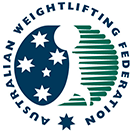By Michael Keelan
I always marvel at the feats of elite athletes doing their thing’ in the various athletic disciplines. Pat Rafter places himself in the perfect position to meet the ball even before it has landed. Emma George sails over the bar with centimetres to spare to smash yet another world record. Frank Farina strikes the ball that travels like a bullet almost ripping the net and the diminutive Kathy Freeman paces herself meticulously to become the World 400m Champion. With the blink of an eye Stefan Botev elevates a 200 kilogram snatch to the satisfaction of the adjudicators. Amazing!!
Its a marvellous feeling to execute a Snatch or Clean & Jerk in perfect style. Mind and body work as one. The movement feels effortless, muscles, ligaments, tendons and joints of the body work in harmony responding automatically to the task. The barbell appears to be weightless. The motion has been successfully accomplished in an instance that leaves an indelible mark and the feeling of euphoria in the conscious mind for eternity. The aim of any weightlifter is to achieve perfection – nothing more, nothing less. The primary job of the coach is to ensure that the weightlifter develops perfect skill. It is well documented that when weightlifters are introduced to any new skill, they will progress through a triad of learning phases called beginner’, intermediate’ and advanced’. There is no precise point at which the lifter passes from one stage to the
next. There is usually some overlap, and often times some oscillation between stages.
Beginner Stage
Coaches need to be able to communicate with their lifters and in general coaches will do
this by means of instruction and demonstrations.
As coaches we should immediately provide the beginner weightlifter with an excellent model of the total skill to be learnt. Coaches can use excellent performers in person or through video images. I emphasise excellent models because the beginner will immediately begin to form a plan or model in the mind before copying the skills in actual practice.
Once the beginner weightlifter has seen the total skill, it is the coaches job to break the
total skill into simpler skills which can be accomplished more easily. The lifter should be given a perfect demonstration of the simple skill accompanied by precise instruction. The lifter should be encouraged to practice the skill concentrating on only one or two key points at any one time. When these points have been mastered then other aspects should be emphasised while continuing to practice the skill.
Coaches should remember that only perfect practice produces perfect skill, and , more
practice is not necessarily always better. As a rule frequent short practices lead to
positive retention of skill.
Early attempts to acquire the skill in this beginner practice will be characterised by
rather jerky movements and a larger number of errors will occur frequently. This is due
to the fact that the movement comes about through conscious control occurring in the higher brain centres (the cerebral cortex). As the movement is performed conscious monitoring and correcting takes place and this is why it is essential that the coach provides concise and accurate feedback to the lifter who at the same time is gaining feedback through his/her personal system of external receptors (eyes and ears) and internal receptors (kinaesthetic, muscles, tendons and joints). It is essential, therefore, that the skill is being performed in an exact manner, as close to perfection as possible.
Accordingly, coaches of beginners have an enormous responsibility to their charges. The coaches have to identify the errors as they occur, provide feedback and then get them to modify the technique to develop the skill in perfect style. Most importantly, if these errors are not picked up and are allowed to be continued, the lifter will develop an automatic style which will not allow them to achieve their goals or their true potential.
Intermediate Stage
During this stage the lifter begins to get the feel of the movement and the skill becomes more fluent as coordination improves and timing becomes more precise. The mental image is clearer and is used more frequently by the lifter to provide personal feedback.
The lifters begin to link the simpler skills together and an appropriate rhythm is formed.
The motor control now moves away from the cerebral cortex to the lower brain centres
which incorporate the cerebellum and the spinal cord which allows for a more automated approach of skill development.
With this new found freedom in executing the skills there is always the danger that the
lifter will develop faults, the coach can now direct the lifters attention to these particular
aspects of the movement performance rather than just on the outcome as was actioned during the beginner stage i.e. even though the lifter succeeds in getting the barbell to the finish position in the Snatch, the execution of the lift still contained flaws such as the barbell moving too far away from the lifters body and not traveling in a straight line.
During this phase the coach will start to give feedback during the actual practice.
Coaches should be aware though that some lifters may find it difficult to cope with both the practice of the movement and attending to coach information.
Final Phase
In this phase the skill movement becomes automatic. In other words the lifter can
produce the skills without conscious attention to details of the movement. When the
lifter reaches this stage performance is enhanced.
The coach must remember, however, that once movement has been automated, learning
does not stop. The lifter still needs to practice extensively to enhance memory, and only
perfect practice will produce perfect skill movement and a perfect memory.
At this stage the lifter has now developed a blue print of the skill. This blue print provides the lifter with an instant and transparent mental image and recall of the feel of the movement. The more experience the lifter has from practice and competition the
greater the clarity of the blue print.
Conclusion
The next time you look at any elite athlete performing brilliantly be aware that the
athlete is performing automatically. The letting go of conscious control requires ‘trust’ when performing automatic, complex motor skills such as the Snatch or Clean & Jerk. As the lifter progresses through the triad of stages, the movement sequences become more refined until the final phase is achieved, resulting in a unique, efficient automaticity. The elite lifter lets go of the conscious control over the movement in the competition lifts. The elite lifter tunes in to the automatic mode naturally because of the accuracy, complexity and speed required to lift big weights demonstrating perfect skill. This automatic state can be viewed as a ‘trust’ state, a state in which the lifter frees
him/herself of expectations, fears, inhibitions or other conscious activity and maintains a clear present focus. For the lifter, the attainment of ‘trust’ becomes an ongoing performance goal from one experience to the next and should be viewed as a psychological skill that is never completely mastered but always displays ‘poetry in motion’.
The coach and lifter have to work closely as partners to ensure that perfect skill is mastered. This shared goal will only come about by attention to detail, commitment and
hard work by the pair.


